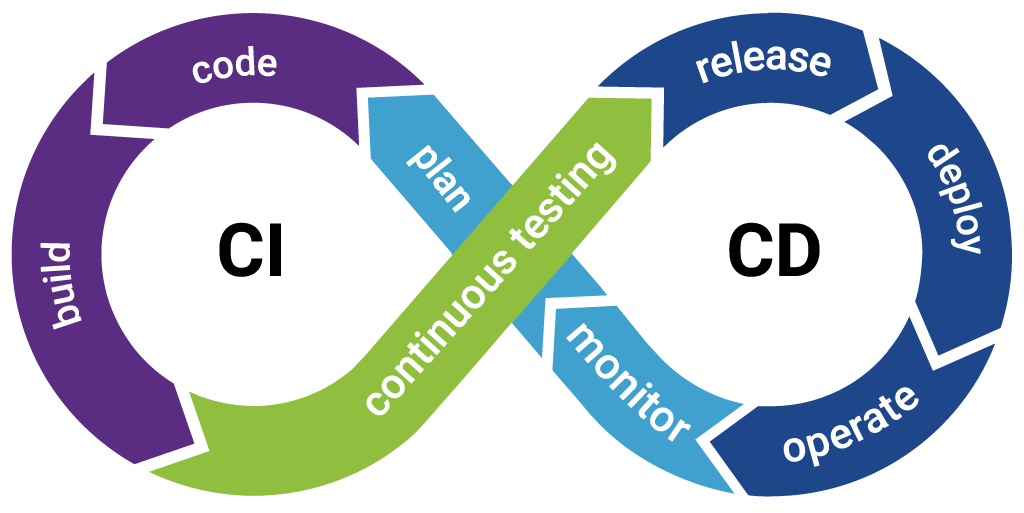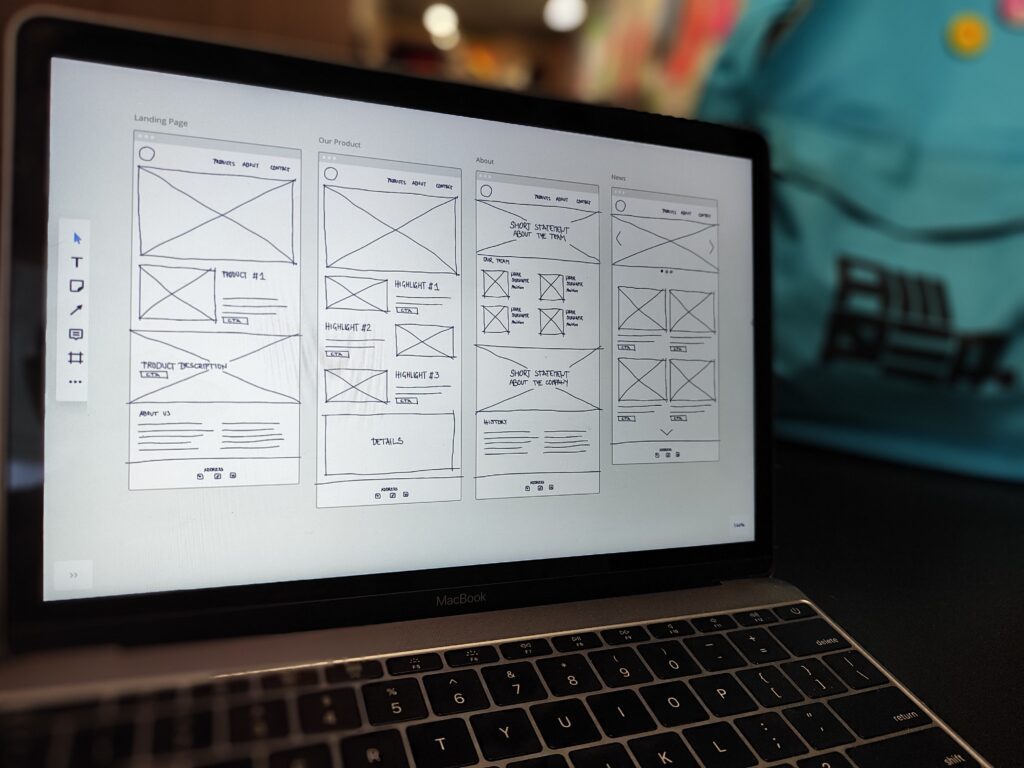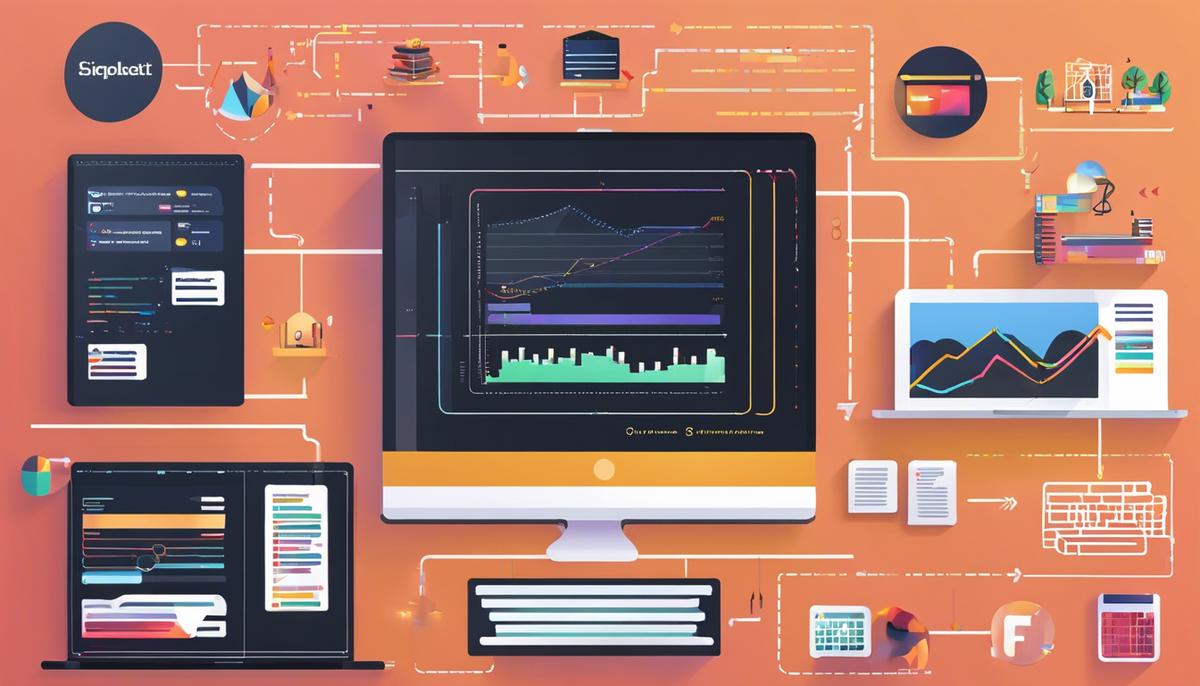Entering an era shaped by digital transformation, 2024 promises to bring a spectrum of evolving trends in the realm of software development. Key drivers of this transformation encompass the rise of low-code/no-code platforms. The adoption of Artificial Intelligence (AI) in software development practices, the centrality of cybersecurity, the integration of Continuous Integration and Continuous Delivery (CI/CD), and the increasing emphasis on User Experience (UX) in software creation. Each unfolding in distinctive ways, these trends influence the trajectory of software development, impacting not only developers but also end users and shaping the day-to-day digital experiences of people worldwide.
This exploration provides a comprehensive look into these leading-edge trends. Explaining how they work, their benefits, their predicted impact, and how they’re expected to change the tech landscape in the imminent future.
Shift towards Low-code/no-code platforms
The Indelible Impact of Low-code/No-code Platforms on The Software Development Landscape
As we plunge further into the digital frontier, there’s an undeniable technological revolution shaking the very foundations of software development. As part of the vanguard leading the software engineering scene, have you noticed this seismic change? Yes, we’re talking about the rapidly growing shift towards Low-code/No-code (LCNC) platforms transforming the template of traditional coding.

The Promise of Low-code/No-code Platforms
LCNC platforms hold the promise of simplified and unprecedentedly efficient software development, making the process accessible to a broader cadre of tech enthusiasts. These platforms strip away the intricate, time-consuming process of manual coding. Instead, offers users a visually intuitive interface that broadens problem-solving avenues. What does this mean for the conventional software development scene? Likely, an era where the prowess of Python or Java is no longer the prime lynchpin of creation.
Realigning the Skills Pyramid
LCNC deployments are starting to realign the traditional skills pyramid in the software development world. Instead of investing countless hours in mastering hardcore programming languages, developers can now channel their efforts into delivering immediate value. This recalibration of skills is ushering in an era of “citizen developers,” non-technical enthusiasts who leverage LCNC platforms to create applications, thereby unlocking new problem-solving potentials.
Accelerating Development Cycles
The adoption of LCNC platforms packs another significant punch: it propels development at an unprecedented speed. By removing the need for manual line-by-line coding, LCNC platforms drastically compress the timeline from concept to deployment. It’s a quantum leap for software development, turning weeks of work into a few days or even hours. It’s no wonder these platforms are becoming the new normal in the era of rapid digital transformation.
Fostering Innovation
LCNC platforms level the playing field by democratizing access to software development, leading to innovative solutions. By removing technical barriers, these platforms give free rein to users to experiment, iterate, and improve software solutions. This democratization fosters a culture of innovation, where creativity becomes the new currency, not mere technical competence.
Underscoring Security
Yet, amid this explosion of creativity, security proves an effective counterpoint. With LCNC platforms, built-in security features get woven directly into the application fabric because platform developers cover these aspects up-front. Thus, LCNC platforms hold potential implications for enhancing system security while saving time in the development process.
However, no discourse can be one-sided. While LCNC platforms continue to garner admiration, skeptics worry about standardization issues, control over complex processes, and potential compromise on customizability. Yet, the undeniable fact remains that the shift towards LCNC platforms is indeed reshuffling the traditional dogmas of the software development world.
The LCNC revolution stands at the cusp of an exciting era where an individual’s innovative instinct and problem-solving aptitude gain precedence over mere coding prowess. This shift could herald a new wave of democratization in the software development scene and beyond. Ultimately breaking the status quo, sparking creativity, and promoting an all-inclusive digital culture. Only time will determine how far this LCNC wave will crest, but for now, there is considerable momentum behind this ride.
The Rise of Artificial Intelligence in Software Development
“2024: Embracing the Dawn of AI in Software Development”
Pioneers and visionaries in the world of technology have long been fascinated by the potential of Artificial Intelligence (AI) to reshape every aspect of our lives. One field that is currently under a transformative phase owing to the rise of AI is software development.

Imagine conceiving sophisticated software with autonomous AI capably executing tasks that once required rigorous coding. This isn’t a depiction from a science fiction movie, it’s a reality of software development in 2024. Talking about how AI is influencing this field, it is instrumental in automating routine processes while we humans strategically dedicate our cognitive resources to more complex tasks. This is not merely a futuristic ideal – companies today are utilizing AI to automate the coding course in their development projects.
In-depth machine learning algorithms are at the center of this revolution, amplifying both efficiency and accuracy by identifying patterns and learning from past choices. AI-powered tools are capable of improving functions such as debugging, patching, and even producing code. This doesn’t imply that they’re ready to replace human coders, but it does signify additions to our toolkit, simplifying tasks and minimizing errors.
Furthermore, AI is progressively eliminating the barriers between software development and operations, giving birth to a new realm, commonly known as DevOps. AI-driven DevOps magnifies the speed and quality of software development, thereby reducing costs and potential risks.
The role of AI
The role of AI is also fundamental in the testing and quality assurance stages of software development. AI’s ability to replicate human interactions can significantly increase testing efficiency while reducing manual efforts. AI tools can predict potential vulnerabilities and address them proactively, thereby providing an additional security layer in software development.
Despite the impressive automation capabilities, AI also presents fresh challenges. It necessitates software developers to not just comprehend complex algorithms but also understand data science and analytics. Software development in 2024 demands holistic learning and adaptive capabilities from developers operating in a space where AI is no longer an option, but a core element of their craft.
Looking at the seemingly near-endless advantages, AI is certainly pioneering new vistas of possibilities in software development. However, it is essential to view AI as a tool to augment human potential, not replace it. It is true, at least as of now, that the empathy, intuition, and creativity humans bring to the table can’t be replicated by artificial minds.
Indeed, it’s an exhilarating time to be involved in software development. The era of AI has transformed what was previously a realm of manual, linear processes into a dynamic industry that thrives on innovation and advancement. With AI’s exceptional ability to accelerate, simplify, and secure software development, the frontiers of what is achievable continue to expand.
The proliferation of Cybersecurity practices in Software Development
The evolution of cybersecurity has turned into a high-speed chase, continually reaching new thresholds driven by technological advancements. Against this backdrop, a sharper industry focus on cybersecurity practices has been steering the software development landscape into uncharted waters in 2024.

The ‘shift-left’ mindset has become increasingly prevalent. Incorporating security testing in the initial stages of the software development life cycle (SDLC) can identify and rectify vulnerabilities much earlier. It emphasizes a proactive approach, integrating security features right from the initial phases of software design and development. The theory is simple: baking security in is more effective than bolting it on at the end.
Microservices architectures are gaining traction in software development, aligning with the enhanced focus on cybersecurity. They enable different functions to be decoupled and developed independently, not just simplifying the development process, but also improving the robustness of software security. When parts are independent, failure or cyber-attacks on one do not necessarily impact the other parts, thus enhancing overall application security.
The rise of Secure DevOps, or DevSecOps, is a direct consequence of the increased focus on cybersecurity. Traditionally, development operations (DevOps) and security teams used to operate in separate silos. No more. DevSecOps creates a synergy between the two, fostering a culture of shared responsibility for secure code creation.
Automated security tools in software development
The emergence of automated security tools in software development is another notable trend. From static code analyzers that pick out vulnerable code snippets, to automated fuzzing tools that input random data to uncover potential flaws, to security platforms that deliver real-time threat visibility. Automation is boosting both the speed and accuracy of software security checks.
Data is now the lifeblood of any enterprise, and encryption has become a non-negotiable feature in software development owing to this. Transitions from legacy, block encryption algorithms to faster, more secure quantum encryption mechanisms are being observed. Cutting-edge encryption standards are improving data security, reducing the possibility of breaches, and enhancing user confidence.
The future seems ripe for ‘Privacy by Design,’ a strategy where privacy measures are inherent in a product. In an era where data privacy regulations are tightening, this approach could prove to be the key differentiator in a security-first software development environment.
In this evolving climate, cybersecurity practices aren’t a mere appendix to the software development life cycle. Rather, they have become a foundational pillar, inspiring and enabling the shift towards a more secure digital ecosystem. The tech trends of 2024 highlight a critical lesson for all software developers. Software’s strength is judged not just by its functionality, but equally by its security. In the labyrinth that the cyber world is, that’s the ultimate goal – creating an impregnable fortress.
Integration of Continuous Integration and Continuous Deployment (CI/CD)
The Integration of CI/CD: An Unstoppable Catalyst in Software Development
Welcome to the realm where software development takes on an all-new level of agility. The arena of Continuous Integration (CI) and Continuous Delivery (CD). This remarkable integration has revolutionized the software development landscape, pushing automation and seamless testing to the forefront.

Continuous Integration (CI) is the practice of frequently merging changes in the codebase, thereby ensuring swift resolution of conflicts. Instead of amalgamating massive alterations at once, CI follows a ‘little and often’ approach. This principle aids in avoiding chaotic merges and helps expose defects early.
DevOps and CI/CD align to form an unprecedented powerhouse of productivity. The symbiosis empowers developers to deliver defect-free software faster. It makes periodic, conventionally planned releases archaic by enabling a constant stream of verified updates. The result is increased efficiency and swift, secure software releases.
The ability to rapidly test and deploy software is boosted tenfold with Continuous Delivery (CD). CD taken in tandem with CI imparts a streamlined flow of changes from a localized communal repository to production. This model eradicates the need for manual intervention by automating the build, deploy, test, and release process.
Frequent iterations and swift feedback accelerate the innovation speed. Development teams can focus on creating excellent features rather than getting bogged down in the Byzantine process of identifying errors and resolving them. End-users aren’t left waiting for updates; value is delivered rapidly and continually with the integration of CI/CD.
Adopting CI/CD
Adopting CI/CD also fosters a fail-fast approach. The earlier a fault is discovered, the cheaper it is to fix. Automated testing ensures problems are pinpointed as soon as they occur. Facilitating swift resolution and minimizing the infamous ‘panic’ phase that often accompanies major rollouts.
CI/CD reinforces the notion of ‘Shift-Left Testing’. The ‘shift-left’ approach brings testing early into the life cycle, promoting preventative measures instead of reactive ones. It’s an approach where bugs are squashed as soon as they crop up, thereby making the software more resilient and adding an extra layer of security.
Last but not least, CI/CD equips teams with the valuable skills of responsibility and accountability. Developers obtain a stronger ownership sense for the code they write and push to production. They develop an intimate understanding of the link between their actions and the system’s state, creating a robust feedback loop that breeds constant improvement.
The incorporation of CI/CD into software development, to say the least, is a game-changer. It promotes a culture of transparency, accelerates the development process, and enhances software quality by enabling immediate identification and resolution of issues. The result? Fortified and resilient software delivered faster. It may be a complex journey to embrace CI/CD, but the end results will justify the means.
The Importance of User Experience (UX) in Software Development
Positioning UX as an Indispensable Asset in Software Development
A phenomenon that is not a stranger to the tech world, but gained an escalating importance in 2024 is the increased focus on User Experience (UX). Centering UX at the heart of the software development strategy is not a fleeting trend but an absolute essential. This stems from an enhanced comprehension of the key role UX plays in catalyzing the success of a software product.

Brushing off UX as mere visuals is a gross misinterpretation. UX transcends the aesthetic aspect. It encompasses how the end-user interacts with the software and the overall degree of satisfaction derived. In 2024, UX is construed as a blend of design thinking, human interaction, functionality, and aesthetics. Ignoring UX is synonymous with sidelining the user’s voice, needs, and preferences, a mistake unworthy of making in this user-centric era.
Factoring in UX in the initial stages of development invariably leads to a reduction in development time. UX-focused teams pinpoint potential usability issues early on, preventing time-consuming, costly revisions later. User-centric design principles ensure a clear blueprint, thereby slashing unnecessary modifications. Rational, analytical tech enthusiasts might view this as an invitation to resurrect the age-old debate of ‘added time versus saved time’. However, considering the recent trends, it’s crystal clear that user-centered designs effectively optimize development processes, saving critical resources in the long run.
In an age obsessed with speed and agility, UX is an ally, not a foe. UX aligns perfectly with Agile development principles. Agile development, with its iterative sprints and constant feedback, complements UX-based testing and refinement. In an Agile setup, UX acts as a beacon, directing the development process according to user expectations, and efficiently tackling potential setbacks.
UX is a trump card
In an era where the user is spoilt for choice, an exceptional UX is a trump card in ensuring user retention and loyalty. Innovations in AI, automation, or security might be what attracts users initially, but it’s the user experience that plays a significant role in retaining those users. In 2024, customer-centric organizations realize that creating a seamless, intuitive user experience is paramount. Outstanding UX is indicative of a flawless user journey, which encourages repeat usage, fosters loyalty, and amplifies user retention.
While we emphasize the need to uplift UX, there’s certainly no encouragement to downplay security. Balancing both becomes essential. A seamless UX is of minuscule value if the application doesn’t adhere to rigorous security protocols. This complex task of integrating security without distorting the user experience forms a significant facet of software development in 2024.
As the curtain falls on the discourse, it’s undeniable that an increased focus on UX is no longer a luxury but a necessity. UX, once a sidekick, is donning the superhero cape, carving a noble path that software developers can’t afford to disregard. In 2024, the software development process isn’t merely about building software; it’s about creating an experience. Innovation in UX is leading that revolution from the front.
Conclusion
As the clock ticks towards 2024, software development is poised to experience profound transformations powered by the evolving trends highlighted. The ubiquity of low-code/no-code platforms, AI’s increased application in the software creation process, an intensified focus on cybersecurity, the adoption of CI/CD practices, and a magnified spotlight on UX design, all herald a new age in software development. While these trends continue to disrupt the traditional software-building landscape. They also unlock unprecedented opportunities for innovation and improvements in user experience. Staying attuned to these trends will remain essential for organizations and developers alike. As it will provide the competitive edge necessary in the rapidly changing software development scene and shape the digital future of 2024.

Hi, I’m Nathan Cross, a writer and avid reader who loves crafting articles for newspapers and online platforms. Words are my passion, whether I’m telling stories, sharing insights, or sparking conversations. When I’m not writing, you’ll find me lost in a book or out on the baseball field, enjoying the game that keeps me grounded. Writing, reading, and baseball—these are the things that define me.




